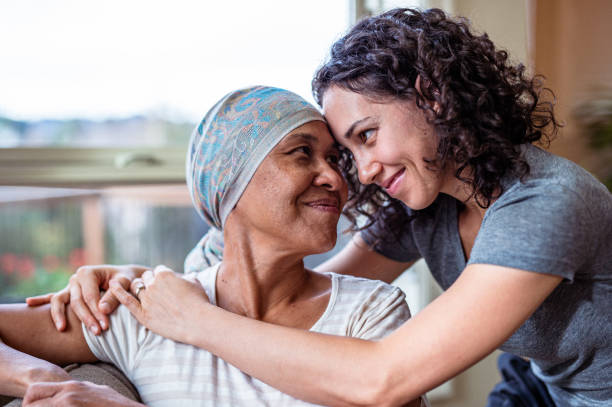Telemedicine and cancer care are increasingly connected, offering patients convenience, lower costs, and flexible communication options. Care teams now reach patients through phone, video, email, and text, expanding access beyond traditional visits. However, technology literacy and limited broadband continue to create barriers for many patients. The study Strategies to Make Telemedicine a Friend, Not a Foe, in the Provision of Accessible and Equitable Cancer Careoffers practical ways to close these gaps and ensure equitable access.
Telemedicine and Cancer Care Benefits
The integration of telehealth and cancer care is a field known as tele-oncology. Telehealth consultations are utilized in tele-oncology. These include phone or video calls, email, and text message interactions between patients and their healthcare providers. This approach benefits patients and caregivers with convenience, cost savings, and flexibility in scheduling.
Tele-oncology reduces logistical burdens and saves on costs because patients and their support networks can access medical consultations and services from their homes. This eliminates the time and expenses of traveling to a healthcare facility. According to a study published in JAMA Network Open on January 1, 2023, the adoption of telehealth has led to an average cost reduction of approximately $147 to $186 per patient visit.
Additionally, telemedicine for cancer care can reduce the risk of germ exposure, which is important for patients with weakened immune systems due to cancer treatments. By minimizing in-person visits, telehealth lowers the risk of infections. It also offers patients and their families peace of mind and fosters a safer healthcare environment.
Telemedicine’s Role in Expanding Access and Reducing Disparities
While telemedicine holds great promise, it also presents particular challenges. Access to technology and digital literacy can be barriers for many patients, particularly older adults, people of color, and those with limited English proficiency. To ensure telemedicine bridges gaps rather than exacerbating disparities, the study outlines practical strategies and policy recommendations for optimizing the use of telemedicine in cancer care.
The following sections will delve into the study’s key findings on expanding access and reducing disparities in telemedicine use in cancer care.
Bridging Geographic Gaps with Telemedicine for Cancer Care
Telemedicine bridges geographic gaps while extending medical consultations and follow-up care to patients far from specialized oncology care centers. The result is a substantial reduction in travel expenses and the time patients need to take away from work for in-person medical care. This translates into a cost-effective choice, making telemedicine in cancer care more accessible than ever before.
Cost Savings with Telemedicine
Cost-effectiveness is a hallmark of telemedicine. Patients can expect significant savings, with out-of-pocket expenses notably lower than traditional in-person visits. Telemedicine for cancer care not only eases the financial burden of travel but also eliminates the need for costly accommodations, making cancer care more affordable and accessible.
Equalizing Access
Telemedicine makes specialized healthcare access available to patients with advanced cancer. It offers a lifeline to a diverse range of patients, enabling them to access essential medical services regardless of location. Additionally, telemedicine benefits caregivers, allowing them to participate without the constraints of extensive travel. The following sections outline strategies to optimize the use of telemedicine in cancer care.
Video Onboarding Programs
Efforts must be made to reduce disparities in patient education, such as onboarding videos to help patients understand how to use telehealth technologies. Videos and educational materials should be made available in multiple languages. Additionally, some patients may require one-on-one support. Therefore, trained medical staff members must be on hand to assist patients who need guidance. Moreover, there should be a focus on identifying and addressing patient-specific needs to enhance accessibility.
User-Friendly Technology Platforms
Selecting secure, HIPAA-compliant platforms is vital for patient comfort and data protection. Streamlined login procedures make telehealth more user-friendly. Furthermore, closed-captioning and chat functions ensure accessibility for a broader patient demographic. Technical support must be available for patients with limited access to technology.
Optimizing the Telemedicine Visit
Creating an ideal telemedicine cancer care visit environment is crucial. Patients benefit from private, well-lit, and quiet spaces for consultations, along with quality audio and video to enhance communication. Particular attention should be given to patients with hearing or attention challenges. On top of this, strict confidentiality protocols must be maintained to safeguard patient information.
Effective communication occurs by identifying the patient’s preferred language, deploying professional medical interpreters, and training clinicians to work seamlessly with interpreters. Continuity in interpreter use ensures the consistency and accuracy of patient care.
Policy Recommendations
The study’s recommendations extend to telehealth policy changes to solidify telemedicine’s role in equitable cancer care. Advocating for cross-state licensing opens doors for clinicians to provide care to patients across state borders, with waivers for state licensure considered, especially for specific specialized medical fields, to ensure widespread access to telemedicine services.
Additionally, efforts continue to maintain the flexibility of prescribing controlled substances through telemedicine. Special exemptions are proposed for advanced cancer patients requiring effective symptom management.
Striving for equal reimbursement rates for telemedicine and in-person visits is pivotal to ensuring accessibility and affordability. Advocacy is carried out to establish permanent telehealth payment parity laws with commercial insurers, reinforcing telemedicine’s role in delivering accessible, equitable, and high-quality cancer care.
Understanding Telemedicine for Cancer Care
While many embrace the benefits of telemedicine in cancer care, researchers find that healthcare systems must continue to address disparities and maximize their potential to improve cancer care for all. This study points healthcare toward a future where telemedicine is a true friend to every cancer patient, ensuring accessible and equitable care for all.
To subscribe to Tenovi’s Weekly Research Newsletter, just scroll down and find the subscription link below. If you are part of a chronic care management, telehealth, or RPM software and services company, explore Tenovi RPM solutions. Book your free demo and consultation with us today.


